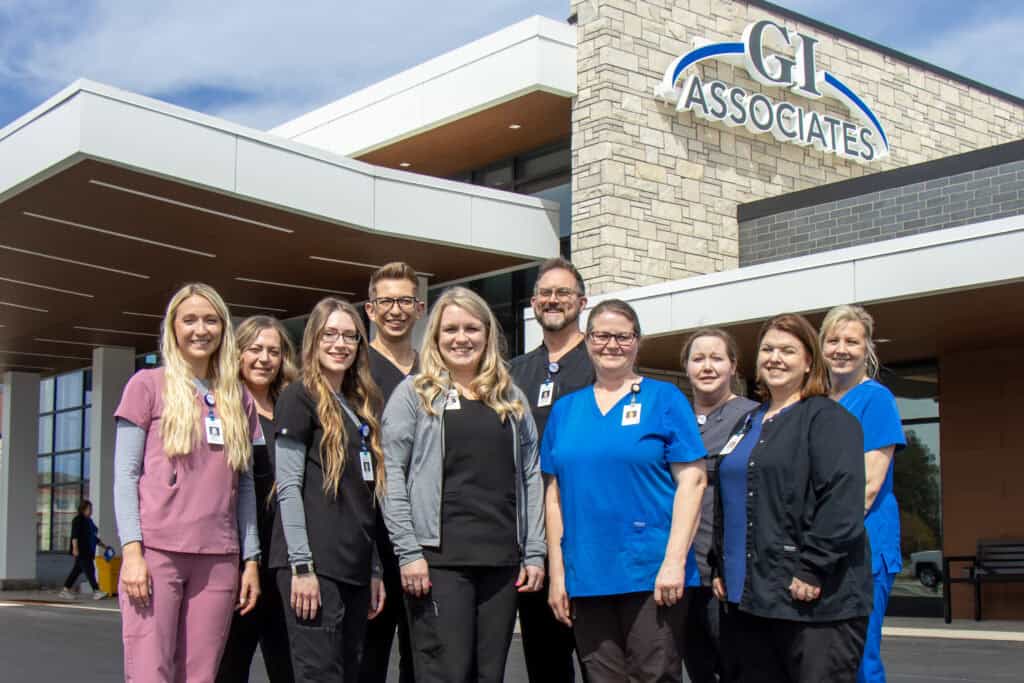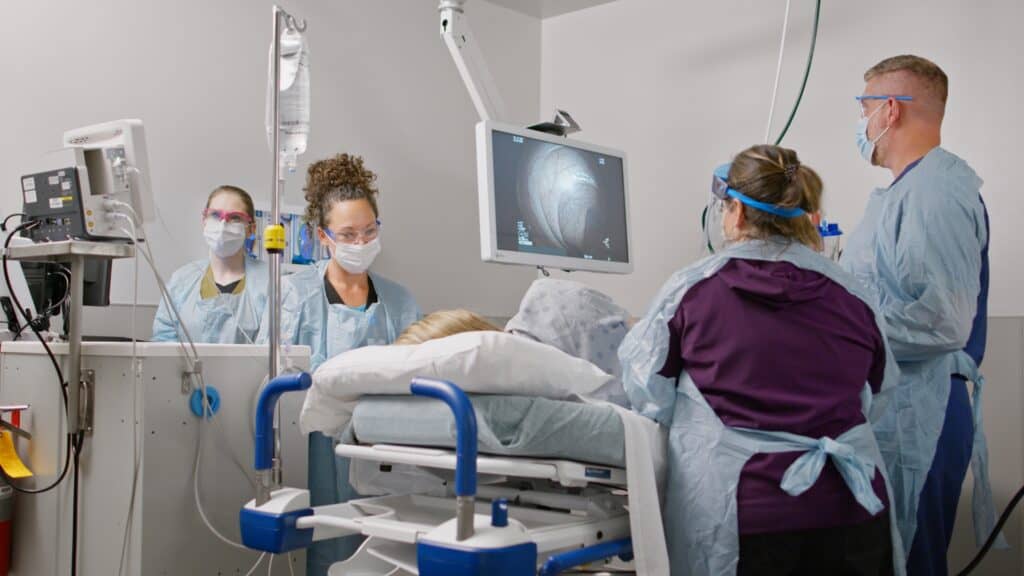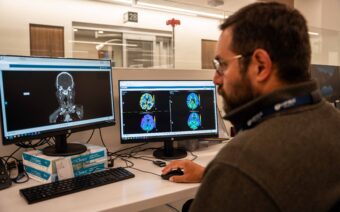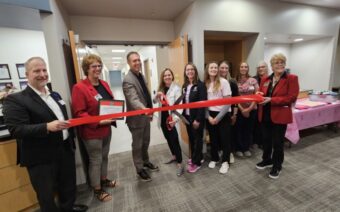
May 12, 2025
NORTH CENTRAL WISCONSIN – For more than 30 years, Raymond Hartke – senior member and president of GI Associates, an independent, physician-owned healthcare provider – said the practice has served the gastroenterology needs of thousands of patients across the North Central Wisconsin region.
Hartke said GI Associates was founded in 1991 and is headquartered in Wausau – where its main office and endoscopy center are located.
The business’s now-retired founders, he said, found the North Central region “was underserved for GI services” and decided to start a practice.
“They got a lot of support – the healthcare system was supportive of them,” he said. “The other members of the provider community were also supportive of having more advanced GI care in the community.”
Now, according to its website (giassoc.org), GI Associates has five offices and two endoscopy centers located between Stevens Point and Minocqua.
“We serve North Central Wisconsin, and then the U.P., (but) it seems to expand,” he said. “I will see a few patients from closer to Green Bay, out to Eau Claire, down to Portage and then north to Kewaunee. So it’s a large catchment area.”
Receiving independent care
In the last year, Hartke said GI Associates’ providers have performed 25,000 GI procedures and conducted 26,000 patient visits.
He said a majority of the care GI Associates provides is elective, because if a patient requires emergent care, they’re most likely going to receive that in a “hospital setting.”
Since joining the practice shortly after its founding, Hartke said he has witnessed “slow, healthy, steady growth through the years” at GI Associates with 11 physicians and eight nurse practitioners now working across its seven locations – and they’re not done.
“About 27% of independent practices are looking at growing if it’s a strong practice, fiscally responsible, healthy practice – and we’re one of those,” he said. “So we do anticipate further growth.”
Across healthcare systems, Hartke said “there’s such a heavy weight of physicians that are close to retirement,” but adds GI Associates does not feel that pressure.
“Most of our physicians are 45 (years old) and under, at the peaks of their careers – the rise of their careers,” he said. “(It’s a) very optimistic industry.”
Benefits exist for both patients and providers of independent health organizations, Hartke said, with patients experiencing more comprehensive and satisfactory care.

“Independent practitioners spend about 18 minutes per clinic visit, (whereas) hospital-based practices spend about 13 minutes per visit,” he said. “So there’s actually greater (patient) satisfaction, you get more time you spend with patients and, in general, you have a longer relationship with patients.”
Those seen by independent providers, Hartke said, also tend to pay less for their care as surgical procedures performed by independent providers, in most cases, cost 30-40% less than procedures performed by providers at a larger health system.
“In regions where there’s been a significant consolidation of health care into hospital organizations or in large healthcare systems, they found that cost of care escalated,” he said. “In regions where there were still independent practices providing care, the rate of cost change was lower – 5% lower – by having those independent practitioners in the communities.”
Providing independent care
Personally, Hartke said he wanted to practice gastroenterology because of his family’s history with GI “healthcare issues” and because it offers the opportunity to be in both a clinical and surgical setting.
“It is an area (of medicine) that has both clinical exposure and (surgical) procedures,” he said. “Some of us like to be in procedures, and there’s a hand-eye hand coordination thing that goes on there… It takes you out of the clinical exam room and puts you into the procedure where you’re working with different skill sets.”
After completing medical school, residency and a fellowship role at Ohio State University, Hartke said he wanted to commit to a community where he’d know and feel known by his patients.
“My mentors expected me to stay in a large city or at a university, but I really wanted to commit myself to a community where I would know my patients, and my patients would know me,” he said. “So, I drove through this area – nice summer day, beautiful blue skies with puffy clouds – and I thought, ‘this would be a great place to raise a family.’”
After researching “what the quality of care was” in the area, Hartke said he found GI Associates, contacted the founding members and, in 1995, was hired as its third practitioner.
Thirty years later, he said his time practicing with GI Associates has gone by in the “blink of an eye.”
Hartke said he was drawn to working in an independent practice because of the “greater sense of autonomy” independent physicians have, as well as being “closer to the decision making.”
Additionally, he said he enjoys the opportunity to be a physician-shareholder – something all associate physicians have the opportunity to do when practicing with GI Associates.
“(There’s) a period of time, typically two years of associateship, where we get to know them better, they can start developing (their practice),” he said. “We can help them develop their practice here, and then they have the opportunity to become shareholders.”
The advantages of working for independent practice don’t stop there – as Hartke said, independent providers typically receive higher pay, experience lower rates of burnout and have the ability to more nimbly respond to community needs because they have less “bureaucracy” to work through.
“You can make decisions that are patient-centered rather than organizationally centered,” he said.
At the onset of COVID-19 – when thousands of patients suddenly required virtual care – Hartke said the region’s “independent practices employed telehealth 4.7 months faster than large healthcare systems.”
The ability to more freely enact change, partnered with increased levels of autonomy, Hartke said, contributes to job satisfaction – leading to less burnout among independent providers.
“The burnout rate is lower for independent practitioners,” he said. “I feel embedded in my community. I feel like I’ve had a real sense of responsibility to my community. Not to say hospital-based physicians don’t, but it’s a little bit different because I might work longer hours, but I have more control over the hours that I work.”
Hartke said independent practices do not negate societies’ need for centralized healthcare systems.
“We do need the hospital systems – I’m not saying everything should be independent practice,” he said. “Hospitals and large healthcare systems, they’re needed for emergencies, for inpatient care, they need to be there for high-risk situations, and some of the advanced care and where it’s more safely performed in a hospital setting.”
Instead of perceiving one another as competition, Hartke said both kinds of practices should collaborate to ensure patients receive the highest quality care possible.
“The ideal scenario is that independent practices work collaboratively with hospitals and healthcare systems,” he said. “The goal is to assure that patients get the best possible care.”
To learn more about GI Associates, visit its website or Facebook page.
 3 Sheeps, LeRoy Butler team up for NFL Draft celebrations
3 Sheeps, LeRoy Butler team up for NFL Draft celebrations Green Bay Packers, NFL officially set dates for draft
Green Bay Packers, NFL officially set dates for draft








